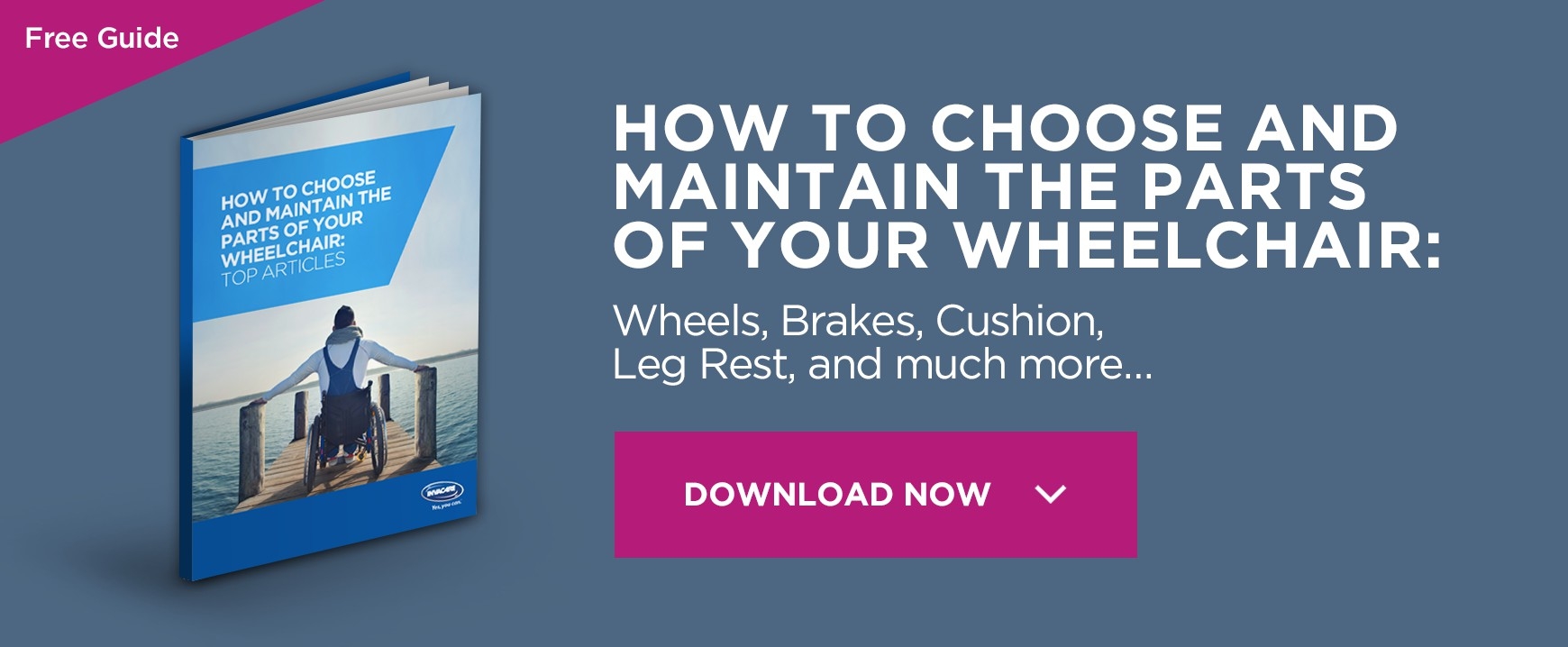Wheelchair casters: types, their importance and how to choose the right pair

Wheelchair casters are often overlooked but they play a vital role in the operation of a wheelchair. These two small wheels at the front of the wheelchair can swivel in every possible direction, which makes it far easier to manoeuvre the wheelchair when getting out and about. Wheelchair casters are connected to the chair itself with caster housings.
Choosing the right wheelchair casters
Like many parts of a wheelchair, casters can be chosen to suit the users specific needs. Casters may seem like a small aspect of a wheelchair, but they can make a considerable difference. Just think of the casters on a shopping trolley and how difficult bad design and fitting of the trolley’s casters can make a supermarket visit! Now, imagine the trouble a pair of wonky or ill-fitting casters could cause you. This makes you realise you most definitely want the right wheels.
Before buying casters for your wheelchair, you must also check the size that is required, as this can vary considerably, ranging from 2.75 inches to 10 inches. Because the casters are in charge of steering and manoeuvring, it is important that you purchase the correct style to suit your needs.
Therefore, when choosing which wheelchair casters you would like for your chair, you need to consider how you use it and how you like to get about. Do you regularly travel over uneven surfaces? Do you prioritise speed over comfort? Do you use your chair more indoors or outdoors?
In fact, the majority of bumps or vibrations a wheelchair user can feel through their chair come via the front caster wheels, as opposed to the larger, rear wheels. This makes the choice of casters especially significant.
Types of wheelchair casters
- The color: Wheelchair casters usually come in shades of grey and black, although other coloured casters are sometimes available for a slightly higher cost, if you want to cheer up the appearance of your wheelchair!
- Pneumatic or semi-pneumatic casters offer the wheelchair user a smoother ride, with shock absorption capabilities against rough surfaces. However, they are also a little slower and can ultimately go flat, and thus require maintenance.
- At the other end of the spectrum, there are smaller, solid casters, which are more effective at moving at speed but offer a less smooth ride. Solid casters are less effective at shock absorption, but last longer because they can’t go flat. These make up the majority of front caster wheels.
- Smaller casters can also get caught in cracks and crevices, making manoeuvrability a little trickier on surfaces that are varied or rough. While larger casters are smoother, but not as nifty for getting out and about at speed.
Taking care of wheelchair casters
Nobody wants to be inconvenienced by a wheelchair breakdown, so it is important to take good care of every aspect of a wheelchair, if you would like it to have a long and effective life. Overlooking even the smallest of attachments or aspects of a chair can lead to breakdowns and a chair needing to be sent away for repair. Whereas regular maintenance can avoid and prevent problems before they begin.
This is definitely true of wheelchair casters, which should be inspected on a regular basis. Check for cracks or damage and any visible wear and tear. Spin the wheel within the caster housing and check it moves without impediment. If you have any doubts, seek advice or call in a professional, although casters can often be relatively easily replaced by wheelchair users themselves, or by the people who support them.
Check this article if you need Invacare wheelchair parts.







